If you know anything about equine coat colors, you’ve probably heard the terms dun or buckskin when used to refer too beautiful fawn-colored horses. Or maybe you’ve heard about palominos, the golden horses with flaxen manes and tails.
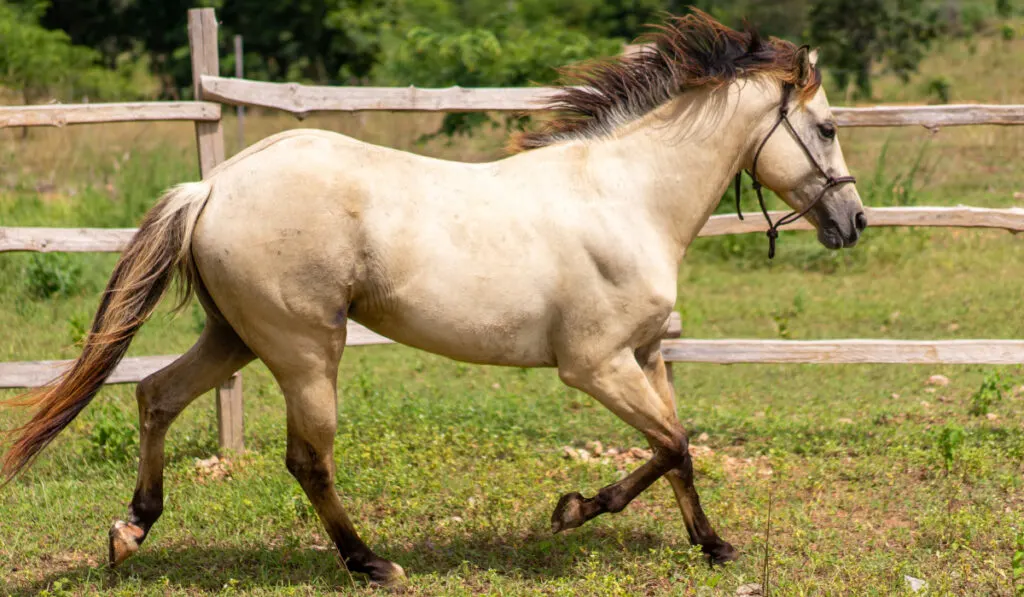
But have you ever heard of a dunskin?
Dunskin is a shorthand abbreviation for a horse that is a combination of buckskin and dun.
This color has unique characteristics and should be distinguished from similar colors as well as those genes required to express it.
Table of Contents
Equine Color Genetics
Every horse has a unique coat color that is dictated by its genes. Some coat colors and patterns are dominant traits that are passed down through generations with little variation. Friesians and Haflingers are great examples of this.
All horses have a red or black base color. For some horses, this is enough, and they are a solid black or chestnut color. However in most horses, there are many other genes that interact and modify these base colors.
In the case of the dunskin, the genes at play are called dilution genes. They literally dilute the black base of the horse to the point where it is no longer black but rather a light golden color instead.
In the case of the buckskin or dun, only one gene acts as a lightening agent. Examples include the cream dilution gene in the case of the buckskin and the dun factor in the case of the dun.
But a buckskin dun, or dunskin, has both the cream dilution gene and the dun dilution gene.
What Is a Dunskin Horse?
A dunskin horse carries genes for both a buckskin and a dun horse with both a cream dilution gene and a dun dilution gene (or dun factor).
The general result is a light tan-colored horse with black points, a clear dorsal stripe, and some evidence of primitive markings on the legs.
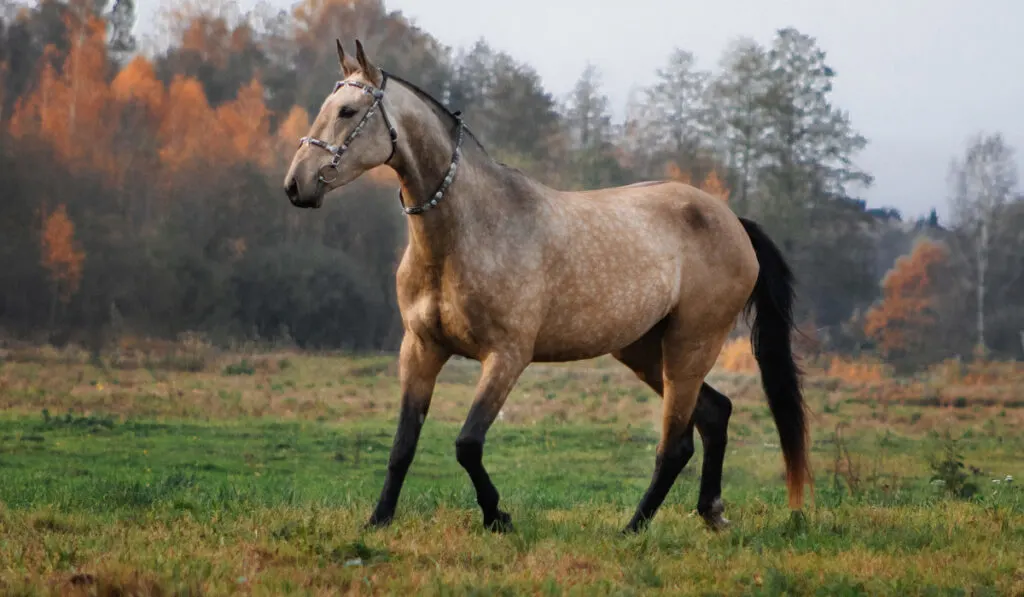
A dunskin can be easily confused with a bay dun or zebra dun, which are dun horses with primitive markings and are the most common type.
The only way to know for sure is through genetic testing to see if the horse carries both the cream dilution gene and the dun dilution gene.
Comparing Dun, Buckskin, and Dunskin Horses
If you trotted out a dun, a buckskin, and a dunskin in a lineup and asked the casual observer to determine which is which, they’d probably have a hard time determining the breeds.
Even the most experienced equestrian may not be able to tell between a dun and a buckskin without a proper DNA test to be sure.
It is possible for horses to have countershading to a degree that they look like they could be dun but don’t actually carry the gene.
Here are the basic differences between these three similar coat colors and some factors to watch for.
Buckskin
Buckskins are light-colored horses with black points and are named for the color of buckskin or deerskin leather.
A horse with a bay coat that has been lightened by a cream dilution gene is a buckskin.
The cream gene does not affect the black parts of the horse, which include the legs, mane, and tail.
A buckskin’s genetic makeup looks like this:
- Black base color (EE or Ee)
- Agouti which keeps the points black but the rest of the coat becomes bay (AA or Aa)
- Cream dilution (one copy) which lightens the reddish/brown bay color to a light tan or gold (n/CR)
Buckskins may have some primitive markings, but they are usually not well defined.
In fact, when the cream dilution gene acts on a chestnut horse, rather than a bay, the result is a lovely palomino horse instead.
Dun
Dun horses are also light colored, but this is the result of the dun dilution gene. This gene lightens a horse’s coat color but not the color of the points on the legs, mane, or tail.
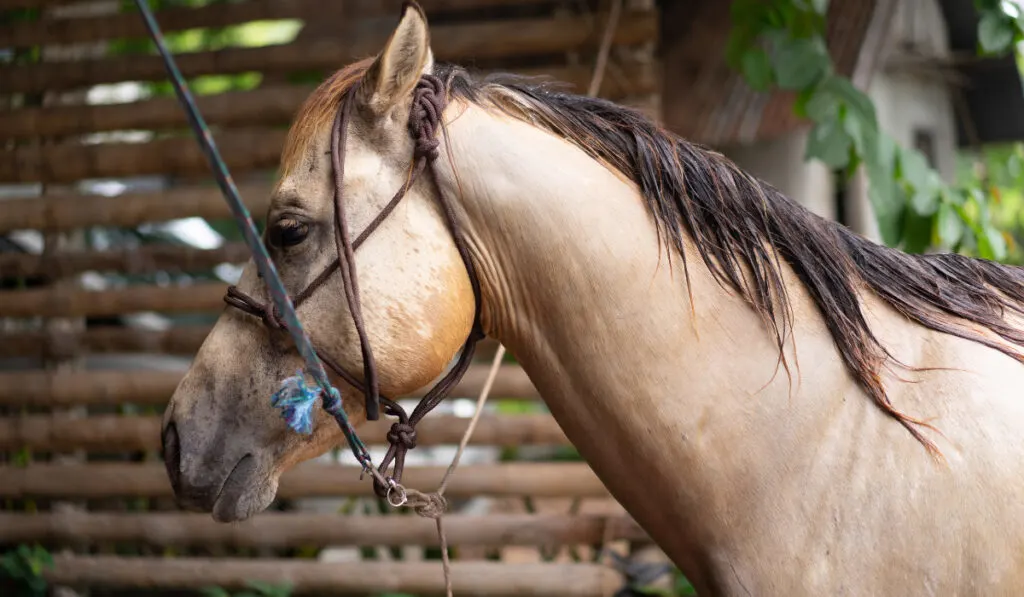
A dun may look like a buckskin at first glance, but with some added features colloquially known as dun factors (or primitive markings). (source) Dun factor characteristics include the following:
- A dark dorsal stripe that runs from the horse’s poll to the dock of its tail, which sometimes has barring that bleeds from the stripe toward the belly.
- Face mask and cob webbing with darker areas of color running down the face and spider-like contrasting lines beginning at the forehead.
- Ear tips or ear frames. Dun horses have contrasting marks on the back of their ears (not the lines on the front) that sometimes appear as horizontal barring.
- Leg barring which is another example of primitive marking that present as dark zebra-like stripes on the legs.
- Shoulder stripes, neck shadow, and rib marring that vary greatly between individuals. Horses with the dun factor will have extra markings on their bodies, especially on the neck and shoulders.
- Frosting with light hair found in the mane or on the dock of the tail, which are naturally dark points.
Not all horses with the dun factor will have all of these characteristics, but a clean, crisp dorsal stripe and ear tips are almost always present.
When the dun factor acts on a chestnut horse, the result is a red dun. The dun factor acting on a basic black horse results in a grulla or grullo. (source)
Dunskin
It can be nearly impossible to detect a true dunskin horse just by looking at one. Differentiating between buckskins and duns is difficult enough, especially when the horses are young and still shedding their earlier coats.
Genetically speaking, a buckskin dun has both the cream dilution gene and the dun dilution gene.
A dunskin horse would look identical to a dun, but his genes would show the following when tested:
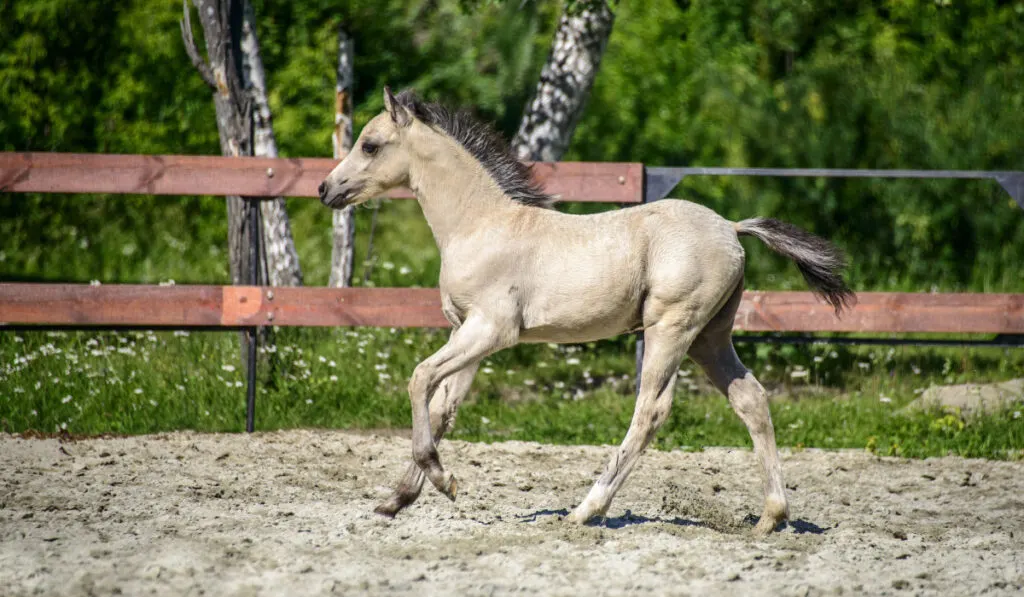
- Black base (EE or Ee)
- Agouti (bay) (AA or Aa)
- Cream dilution (n/Cr)
- Dun factors (DD or n/D)
The purpose of genetic testing for dilution genes is twofold. It is fun and handy to know what kind of horse you have.
But if you plan to breed your horse, you will want to know the odds of getting a diluted foal. Because the dun gene is dominant, two non-dun parents cannot produce a dun foal.
If you are interested in learning more about genetic testing for coat color or want to take a deeper dive into the dilution gene genetics themselves consider testing your horse using one of these horse DNA testing labs.
Countershading
Countershading, also called countershadowing, can be a tricky imposter for dun factor characteristics.
A buckskin may have a dorsal stripe, but the stripe may end just before the tail. A true dorsal stripe continues all the way through.
Many times, countershading only exists in young horses and completely disappears as they age.
Breeders will often genetically test their foals right away to determine whether a horse has a cream or dun gene or if it is exhibiting countershading. (source)
To confuse things further, a dunskin horse’s primitive markings may only be distinctly visible in summer, so they may be confused for countershading as well.
Dunskin Horse Breeds
The dun dilution gene does not exist for all breeds and more commonly appears in specific breeds.
Here are some of the breeds that can carry the dunskin genes:
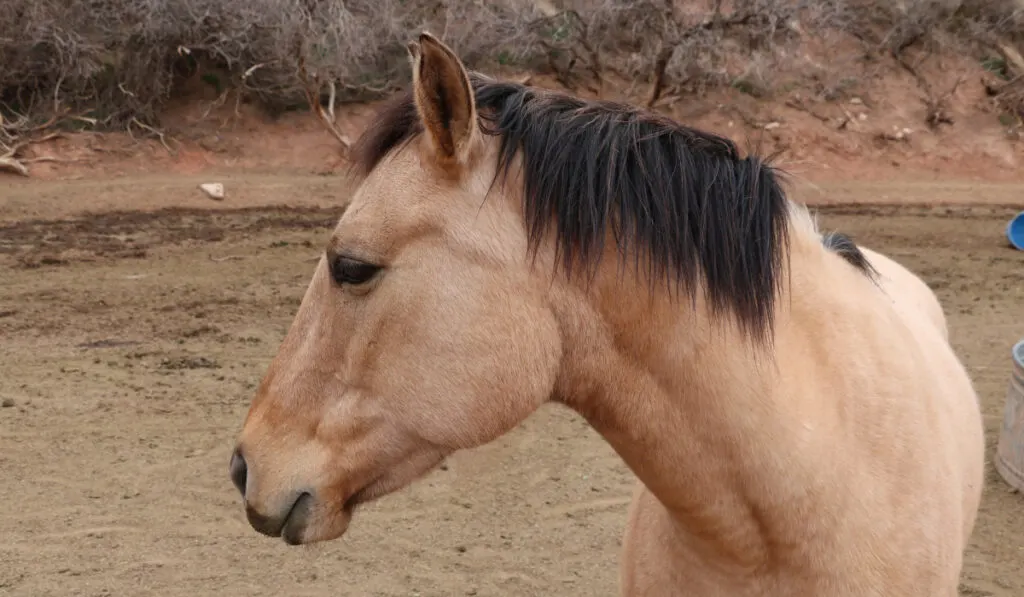
- Andalusian
- Appaloosa
- Azteca
- Bashkir Curly
- Caspian Horse
- Connemara Pony
- Criollo
- Curly
- Icelandic Horse
- Mustang
- Lusitano
- Fjord
- Paint Horse
- Paso Fino
- Peruvian Paso
- Pony of the Americas
- Morgan Horse
- Quarter Horse
- Shetland Pony
- Welsh Pony
- Miniature Horse
The American Buckskin Registry Association aims to preserve the pedigrees of various dun and buckskin colored horses, which also includes dunskins and dunalinos as well.

